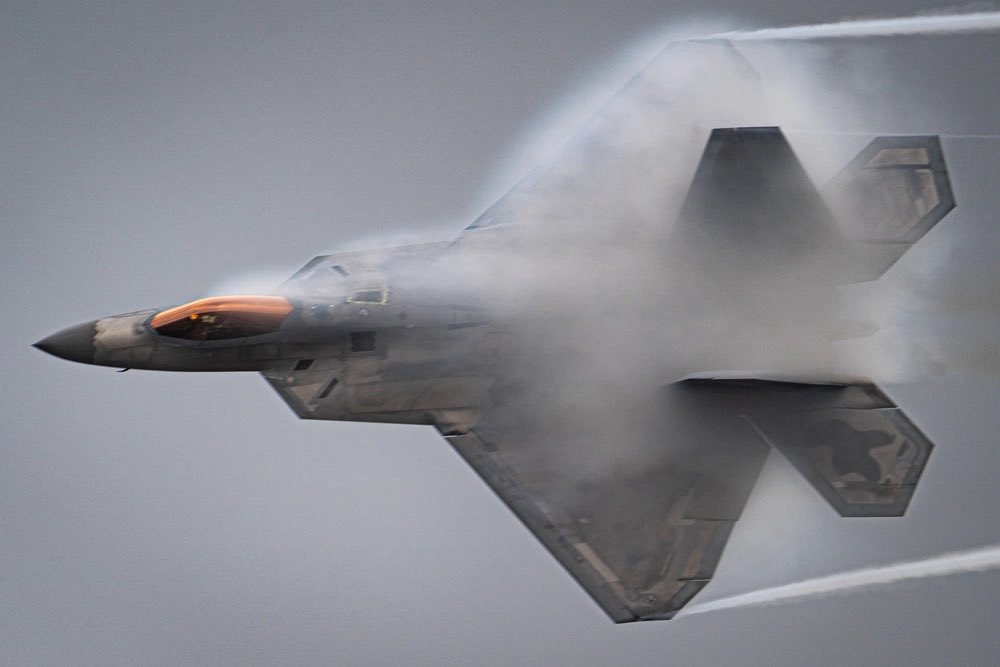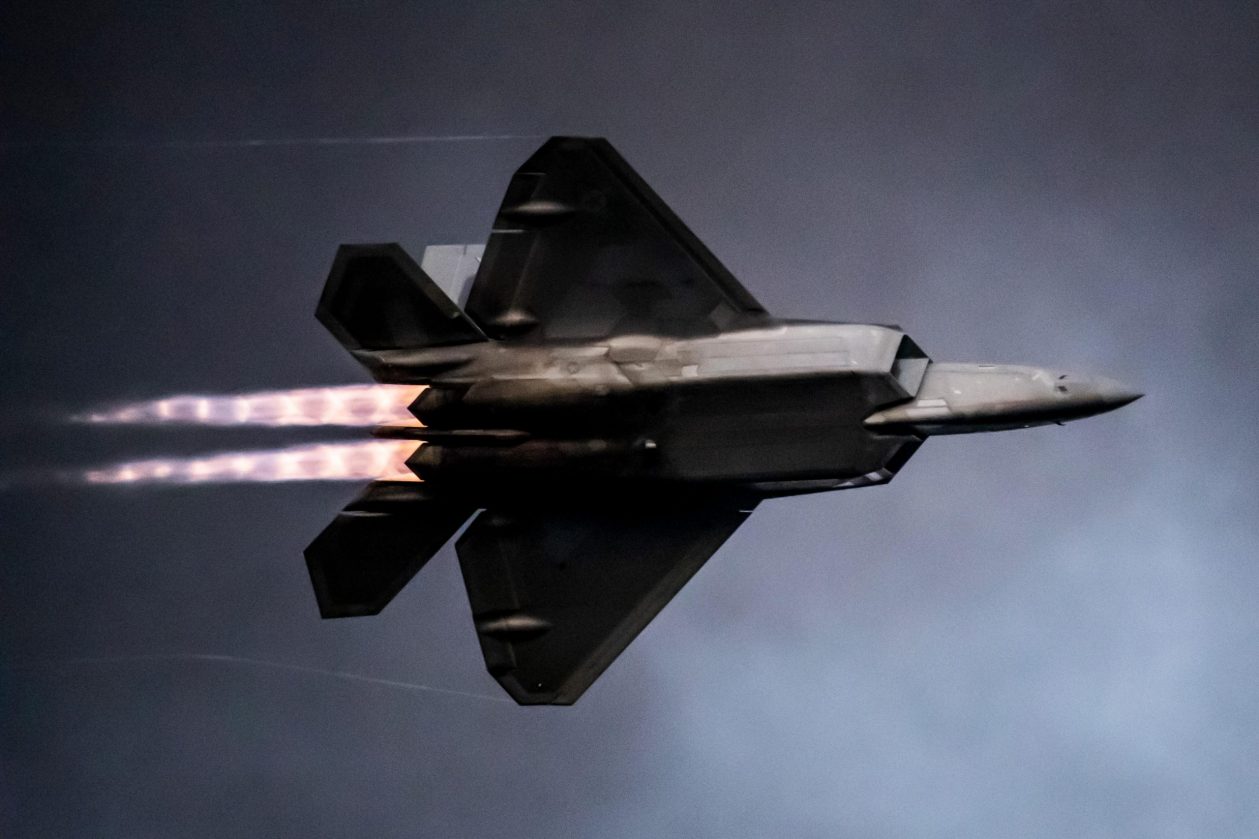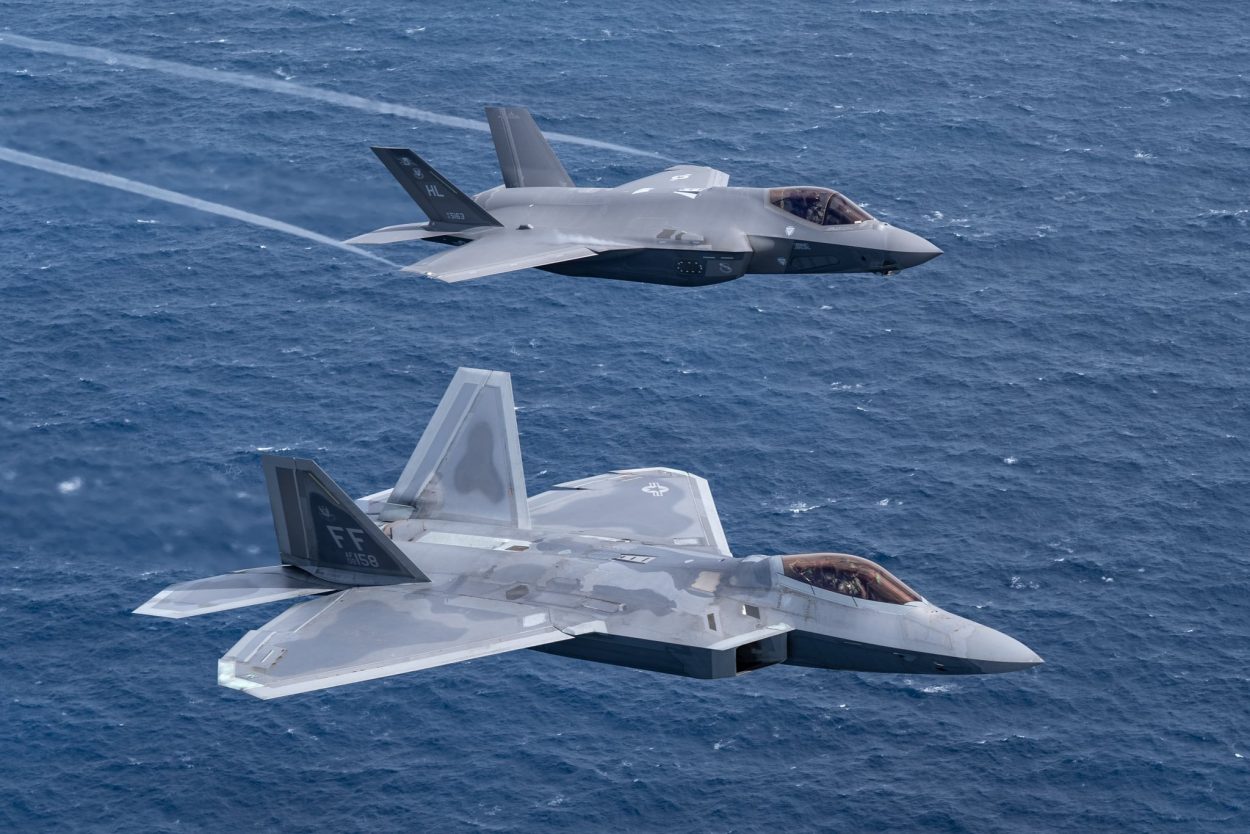The United States Air Force has begun work on integrating an infrared search and track sensor, or IRST, into its stealthy F-22 Raptor air superiority fighter.
The IRST technology that offers a specific ability to detect and track other stealth aircraft, drones, and missiles at long ranges without using radar, was initially planned under the Advanced Tactical Fighter (ATF) program.
Next-Gen Nuclear Technology – US’ Ambitious Nuclear Power Pact With Tokyo Could Fuel Japanese Industry For Decades
However, it was eventually shelved due to financial constraints. The service is now considering reintroducing the capability into the plane.

Now, a document issued under the Small Business Innovation Research (SBIR) program has sought submissions related to new IRST capability and additional upgrades for the F-22.
The document mentioned that the F-22 Program Office is looking for novel hardware and software solutions that enable long-range infrared sensing and object recognition capabilities. If a contractor can produce a solution that fits the requirements, the Air Force will assess its compatibility with the Raptor.
Here's what the original Advanced Infrared Search & Track #AIRST would have looked like on the F-22 (ATF). https://t.co/hhECUGmniu pic.twitter.com/3vzW90YM7l
— Air Power (@MIL_STD) January 13, 2022
The F-22 was to be equipped with a sophisticated IRST at a period when such technology was uncommon in western fighter aircraft. In the pre-production, however, the IRST installation was not carried out.
China’s ‘Largest & Most Advanced’ Destroyer Gets Combat-Ready While PLA Navy To Get More Of Type-055 Warships
The sensor was one of many features that were trimmed early in the development, including side-looking airborne radar (SLAR) arrays that would have been mounted on the sides of the jet’s diamond-shaped nose.
Challenges Ahead
The major task at hand is to figure out how to incorporate an IRST sensor into the existing F-22s. The Raptor’s carefully maintained low-observable qualities may be compromised if an additional pod is fitted.
The sensor could be installed internally, although, it would certainly necessitate a large rebuild that would have an impact on the aircraft’s total radar signature.
US Navy Says Hypersonic Missiles, Lasers Weapons Key Highlights Of Its Next-Generation DDG(X) Warship
Then there’s an issue about whether the IRST’s originally designated interior space, as well as enough cooling, is still available, given that a series of in-service improvements have been carried out on this equipment.
In 2017, Ken Merchant, then-Vice President of Lockheed Martin’s F-22 program, told Air Force Magazine that “we really don’t have the real estate” to fit an internal IRST in the jet. “We’re looking at other options.”

One alternative is to incorporate IRST-like features into one of the F-22’s current sensors, the AN/AAR-56 Missile Launch Detection system, or MLD. This technology enables the Raptor pilot to have 360-degree monitoring of aerial and surface-launched guided missile threats.
The MLD system, which is mounted on the aircraft’s skin and includes six sensors hidden by low-observable windows, consists of a series of optical components and assemblies.
World’s Second Deadliest Nuclear Submarine Accident Not Caused By Collision With NATO Subs – UK To Russia
The AN/AAR-56 is a little-known system aboard the F-22, and its specific capabilities are unknown. However, the system is well-established, and additional components based on cutting-edge technology might potentially provide a more comprehensive infrared search and track capability, allowing it to follow numerous aircraft and missile targets beyond visual range.
Advantages
A modern IRST sensor, such as the IRST21, would enable the Raptor pilot to quickly identify and track numerous threats well beyond visual range. The sensor would offer extra targeting data, enabling a stealth fighter to engage an adversary passively without emitting any telltale radar emissions, a very crucial feature for a stealth aircraft.
The US is currently focused more on the high-end threats posed by China and Russia and integrating IRST to its most powerful fighter would provide an additional edge.

Simultaneously, the F-22 could strike a target without employing its own radar. This would add another layer of defense against missile threats. The AN/APG-77 AESA radar, which is installed in F-22, possesses some of the finest low-probability of intercept (LPI) characteristics, making it difficult for hostile sensors to detect it, let alone geolocate it.
‘Advantage Russia’: As Biden Warns Moscow Of ‘Devastating Sanctions’ Over Ukraine Crisis, Will Putin Be The ‘Ultimate Winner’?
Furthermore, the spectrum of aerial threats that an IRST would assist the F-22 in acquiring and engaging plays a role in critical situations. A sophisticated IRST can identify objects that a normal radar can’t, such as stealth fighters, drones, bombers, and even cruise missiles.
- Contact the author at ashishmichel@gmail.com
- Follow EurAsian Times on Google News




